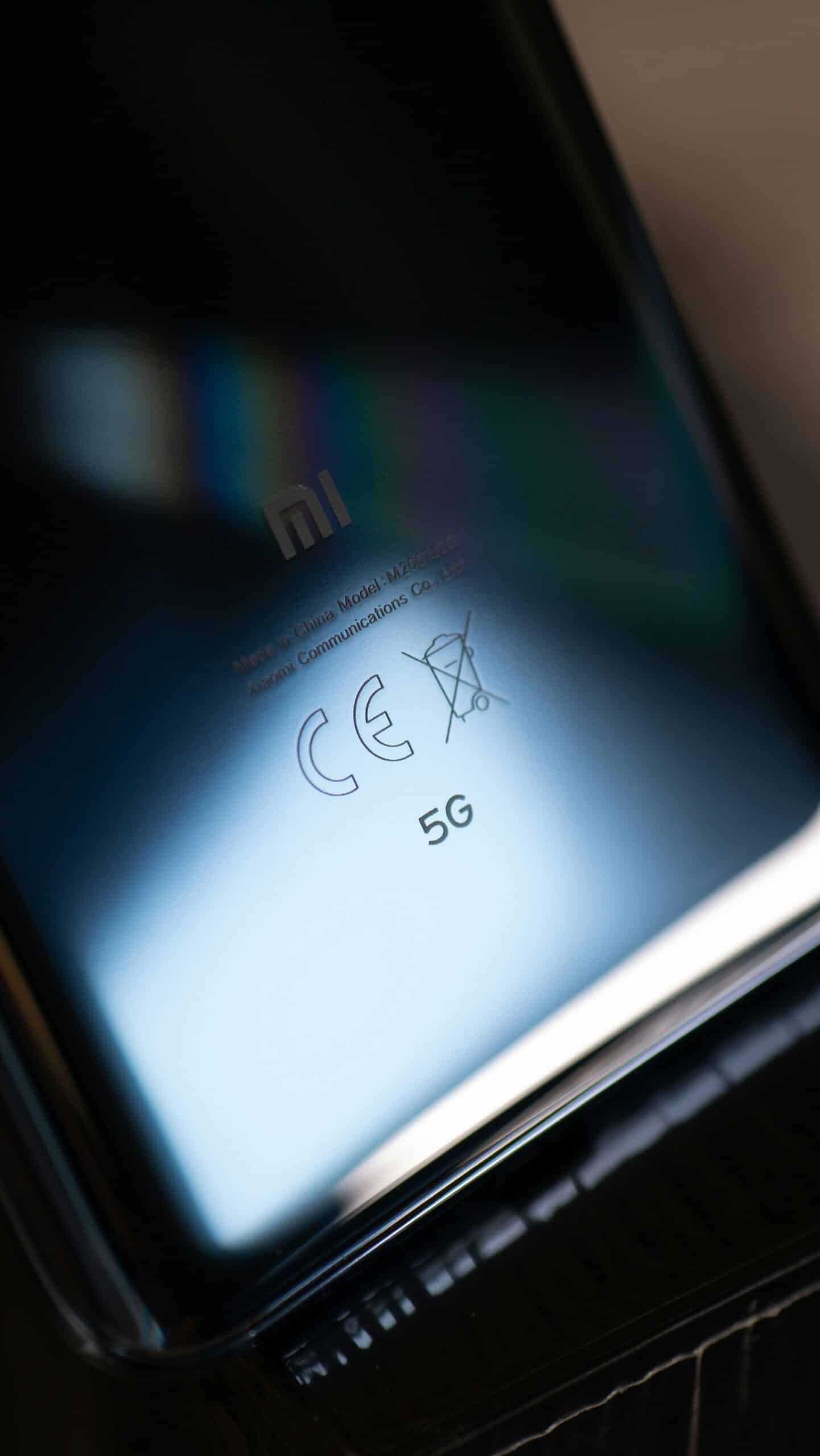The arrival of 5G technology, the fifth generation of mobile networks, marks a significant leap forward in connectivity and data transfer capabilities. Designed to meet the increasing demand for faster speeds, lower latency, and more reliable connections, 5G outpaces its predecessor, 4G, by offering a transformative experience across a variety of applications.
5G supports a broad spectrum of use cases, from enhanced mobile broadband and smart city infrastructure to massive machine-type communications and ultra-reliable low-latency services. This diverse range of capabilities makes 5G essential for everything from streaming ultra-high-definition content to supporting IoT devices and facilitating innovative technologies.
With theoretical speeds reaching up to 20 Gbps, 5G drastically improves download and upload rates while minimizing latency. This surpasses the maximum speeds of 4G, which generally reach around 1 Gbps, offering users a vastly improved experience, especially in environments with high data demands. Furthermore, 5G networks can handle a higher number of simultaneous connections, making them well-suited for the ever-expanding Internet of Things (IoT).
As we dive into the differences between 5G and 5G Ultra Wideband (UWB), it’s important to note that 5G operates across a variety of frequency bands. These include lower frequencies that offer broad coverage and higher frequencies that provide faster speeds over shorter distances. This flexible approach allows 5G to cater to both rural areas needing widespread coverage and dense urban zones that demand high speed and capacity.
In this article, we’ll explore the distinct capabilities of 5G and 5G Ultra Wideband, shedding light on how each technology serves different needs and environments.
What is 5G?
5G is the fifth generation of mobile network technology, bringing transformative improvements over its predecessors. With 5G, you can expect faster speeds, lower latency, and greater bandwidth, all of which enable more reliable and efficient connectivity.
One of the most exciting features of 5G is its speed. In ideal conditions, 5G can deliver data at speeds up to 10 gigabits per second (Gbps)—a dramatic increase compared to 4G LTE, which typically provides speeds of around 100 megabits per second (Mbps). This breakthrough allows for smooth streaming of high-definition content, quick downloads, and an overall better user experience, particularly in bandwidth-heavy applications.
Another key benefit of 5G is its reduced latency, which refers to the delay before data is transmitted from the source to its destination. With 5G, latency can be as low as 1 millisecond (ms), a huge improvement over 4G‘s latency of 30 milliseconds. This reduction is essential for applications that require real-time responsiveness, such as online gaming, autonomous vehicles, and remote healthcare. With 5G, these applications can operate more efficiently and effectively, transforming industries reliant on instant data transfer.
In addition to speed and latency, 5G offers higher bandwidth capacity. This allows more devices to connect simultaneously without sacrificing performance. As the Internet of Things (IoT) grows, with millions of devices continuously communicating, 5G’s ability to support these connections is crucial. Industries like healthcare, manufacturing, and smart cities will benefit from this enhanced capacity, enabling innovations like augmented reality (AR) and artificial intelligence (AI) to seamlessly integrate into daily operations.
In conclusion, 5G represents a groundbreaking advancement in mobile technology. Its combination of ultra-fast speeds, low latency, and expanded bandwidth lays the foundation for the next generation of connectivity, offering limitless potential across various industries.
What Is 5G Ultra Wideband (UWB)
5G Ultra Wideband (UWB) is an advanced version of mobile connectivity that takes the benefits of 5G technology to the next level by using higher frequency bands. This distinction allows UWB to provide significantly faster data transfer speeds and reduced latency, making it ideal for high-demand applications that require exceptional performance.
While 5G already provides faster speeds and lower latency compared to earlier generations, 5G Ultra Wideband builds on these strengths by offering even higher speeds and more efficient data handling. UWB utilizes broad spectrum frequencies, typically above 24 GHz, enabling it to support wider channels. This results in ultra-fast data rates and dramatically reduced latency, which translates into quicker downloads, smoother high-definition streaming, and enhanced real-time interaction for various applications.
The enhanced capabilities of 5G Ultra Wideband make it a perfect fit for bandwidth-heavy applications such as augmented reality (AR), virtual reality (VR), and the Internet of Things (IoT). For instance, UWB can provide seamless performance in real-time, where delays are unacceptable, improving the user experience for industries like healthcare, gaming, and autonomous systems.
In comparison, standard 5G networks operate on lower frequency bands, offering adequate performance but not matching the extreme speeds and ultra-low latency of 5G Ultra Wideband. This difference becomes particularly noticeable in high-density areas like urban environments, where UWB is better equipped to handle network congestion and deliver smoother connectivity even during peak usage times.
Overall, 5G Ultra Wideband sets a new benchmark in mobile network performance. With its extraordinary speed, reduced latency, and ability to support demanding applications, it is poised to revolutionize telecommunications and fuel future innovations that will benefit industries and consumers alike.
Key Differences Between 5G and 5G Ultra Wideband
The arrival of 5G technology has changed how we communicate, offering faster speeds, lower delays (latency), and better connections. But did you know there’s an even more powerful version of 5G called 5G Ultra Wideband (UWB)? Here’s a simple breakdown of their key differences:
Technology and Frequency Bands
- Standard 5G uses frequency bands below 6 GHz, giving it a wider range and better ability to penetrate walls or buildings.
- 5G Ultra Wideband (UWB) works on higher frequency bands in the millimeter-wave spectrum, often above 25 GHz, which supports super-fast data speeds but has a shorter range.
5G and 5G Ultra Wideband Coverage
- 5G: Covers large areas, including rural and suburban locations, making it ideal where infrastructure is limited.
- 5G Ultra Wideband: Works best in cities or areas with advanced infrastructure. Since UWB signals don’t travel far and struggle to pass through walls or trees, it’s perfect for urban spaces.
5G and 5G Ultra Wideband Speed
- Standard 5G: Offers speeds from 50 Mbps to 3 Gbps, which is already much faster than 4G LTE (30-35 Mbps).
- 5G Ultra Wideband: Delivers lightning-fast speeds between 1 Gbps to 10 Gbps, letting you download large files or stream 4K movies in seconds.
5G and 5G Ultra Wideband Latency
- 5G has a delay of about 30 milliseconds.
- 5G Ultra Wideband cuts that down to less than 30 milliseconds, making it great for online gaming, video calls, and even self-driving cars.
In summary, 5G Ultra Wideband is the faster, more powerful option, but it’s limited to specific areas. Standard 5G provides better coverage, making it more accessible for everyday use.
Speed Comparison: 5G vs 5G Ultra Wideband
5G and 5G Ultra Wideband (UWB) represent two different approaches to modern mobile connectivity. To understand their differences, let’s explore the key distinctions in terms of speed, coverage, and performance.
- Standard 5G Speeds:
- Offers download speeds ranging from 50 Mbps to several hundred Mbps
- Best for everyday use, such as browsing and basic streaming
- Provides broader coverage, making it suitable for more extensive areas like suburbs or rural regions
- 5G Ultra Wideband Speeds:
- Can achieve download speeds up to 1 Gbps or more
- Ideal for high-demand applications, such as 4K video streaming, online gaming, and real-time video conferencing
- Utilizes high-frequency signals, resulting in faster data transfer, but with shorter coverage distances (best in urban areas)
- Coverage Differences:
- 5G: Offers wider coverage and better penetration into buildings and through trees, making it ideal for less densely populated areas
- 5G UWB: Provides high speeds but has limited coverage in densely populated or obstructed areas due to the high-frequency signals that can be blocked easily
- Impact of Network Congestion:
- Standard 5G may slow down during peak times when many devices are connected
- 5G Ultra Wideband can also experience slower speeds if the network infrastructure isn’t capable of handling large data loads
- Use Cases:
- 5G Ultra Wideband excels in providing faster speeds, low latency, and supports real-time applications
- Standard 5G offers reliable connectivity for everyday tasks but may not achieve the same peak speeds
- Environment Matters:
- Weather conditions, buildings, and other obstacles can affect the performance of 5G UWB, causing speed reductions
- In contrast, Standard 5G is more resilient to certain environmental challenges, making it more versatile across different settings
5G Ultra Wideband is best for those who need fast speeds and low latency, especially in dense urban areas, while Standard 5G provides a balance between speed and broader coverage in various environments.
Real-World Applications of 5G and 5G Ultra Wideband
The introduction of 5G technology and its advanced counterpart, 5G Ultra Wideband, has significantly impacted a variety of sectors, improving user experiences and operational efficiencies. In healthcare, 5G enables telemedicine, allowing healthcare professionals to diagnose and treat patients remotely, a crucial service for rural areas with limited access to medical facilities. Through fast, reliable connections, doctors can monitor patients in real time, making timely interventions that can save lives.
In entertainment, both 5G and 5G Ultra Wideband enhance content delivery, supporting high-definition streaming, augmented reality (AR), and virtual reality (VR) applications. Live events such as sports can be broadcast in ultra-high-definition with low latency, ensuring viewers enjoy a smooth, high-quality experience. For gaming, 5G technology reduces lag and improves real-time interactions, offering a competitive edge in fast-paced online environments.
The Internet of Things (IoT) is another area where 5G brings significant improvements. With its expansive connectivity, 5G supports the rapid growth of connected devices, facilitating the creation of smart homes and smart cities. Devices ranging from smart thermostats to advanced surveillance systems benefit from the ultra-reliable, low-latency connections of 5G Ultra Wideband, enabling more efficient automation and enhanced security.
In the realm of smart cities, 5G technology is improving urban infrastructure and services. Traffic systems, for instance, are becoming more intelligent with real-time data, allowing cities to respond faster to changing conditions. This results in enhanced urban mobility, reduced energy consumption, and better resource management, transforming cities into more efficient, sustainable environments.
These applications illustrate how 5G and 5G Ultra Wideband are not just advancing technology but are shaping the future of healthcare, entertainment, IoT, and urban development. As these technologies continue to evolve, their impact on daily life and industries will become even more profound.
Challenges and Limitations of 5G and 5G Ultra Wideband
The adoption of 5G and 5G Ultra Wideband (UWB) brings several challenges. One of the main obstacles is the high infrastructure costs. Setting up a strong 5G network requires significant investment, particularly for 5G Ultra Wideband, which needs more small cells and base stations due to its use of higher frequency bands.
Deployment challenges also slow down the rollout of 5G networks. Issues like getting regulatory approvals and finding the right locations for base stations can delay the process. While urban areas might see quicker rollouts due to higher demand, rural areas may experience long wait times, leading to delays in 5G or 5G Ultra Wideband availability.
Coverage gaps are another issue, particularly for 5G Ultra Wideband. Its reliance on millimeter-wave frequencies means it struggles to pass through buildings and other obstacles. This can cause inconsistent service, especially when switching between different networks.
Finally, device compatibility is a concern. Many current devices won’t work with 5G Ultra Wideband, meaning consumers may need to upgrade their phones or other devices, which could be an inconvenience and add extra costs.
Understanding these challenges helps consumers, businesses, and stakeholders better navigate the evolving world of 5G and 5G Ultra Wideband.
The Future of 5G and 5G Ultra Wideband Technologies
The future of 5G and 5G Ultra Wideband (UWB) is bright and full of exciting potential. As these technologies continue to evolve, we can expect huge improvements in mobile connectivity, from faster speeds to better coverage and a more seamless user experience. The main goal of 5G is to provide faster mobile internet, lower latency, and more reliable connections, while 5G Ultra Wideband takes it a step further with even higher speeds, ideal for data-heavy applications.
One of the biggest focuses moving forward is expanding 5G coverage. While initial rollouts have been concentrated in major cities, the future will see more attention given to suburban and rural areas. This shift will help bridge the digital divide, giving more people access to fast, reliable internet no matter where they live. As infrastructure improves with the use of small cells and advanced antennas, both 5G and 5G Ultra Wideband will offer smoother connectivity, no matter the location.
But it’s not just about speed and coverage. 5G and 5G Ultra Wideband are opening doors to amazing new technologies like augmented reality (AR), virtual reality (VR), and autonomous systems. These innovations will transform everything from how we interact with content to how industries like healthcare and entertainment operate, offering immersive experiences and real-time communication that were once impossible.
In short, as 5G and 5G Ultra Wideband continue to develop, we can look forward to faster speeds, better coverage, and a world of new applications that will change how we connect and interact with technology in everyday life.
Conclusion: Choosing the Right Technology for Your Needs
As the world of telecommunications continues to evolve, selecting between 5G and 5G Ultra Wideband (UWB) can greatly influence your overall user experience. While both technologies offer significant advancements over previous generations, the right choice largely depends on your specific needs, whether you’re an individual user or a business.
5G provides broader coverage and is better suited for users who need reliable connectivity in urban areas without requiring the highest possible speeds. It’s ideal for everyday tasks and a wide variety of devices, making it a solid choice for those who need consistent connectivity rather than blazing-fast data speeds. In contrast, 5G Ultra Wideband delivers ultra-fast speeds and low latency, making it perfect for high-demand applications such as augmented reality (AR), virtual reality (VR), or high-definition video streaming. For users and businesses that rely on real-time data processing or data-heavy activities, UWB might be the better option.
Location is also a crucial factor in choosing the right technology. 5G Ultra Wideband excels in high-speed performance but is often available only in select urban areas. If you live in a suburban or rural area, you might find that standard 5G offers better overall coverage. Always check local carriers’ coverage maps to ensure you’re getting the best network for your region. However, it’s important to note that 5G Ultra Wideband availability is steadily increasing, and more areas will likely have access as network infrastructure expands.
Another factor to consider is cost. Due to the advanced infrastructure and technology required for 5G Ultra Wideband, this service may come with a higher price tag, especially for businesses that need to invest in specialized equipment. Consumers should compare plans and evaluate what fits their budget and usage needs.
Finally, consider your usage patterns. For instance, businesses focused on IoT applications might prioritize the reliable, broad coverage of standard 5G, while those in gaming or media may benefit more from the speed and low latency offered by 5G Ultra Wideband. Additionally, some users might find that a combination of 5G for general usage and 5G Ultra Wideband for specific high-performance needs provides the most versatile solution.
By evaluating your location, usage requirements, technology needs, and budget, you can make an informed choice between 5G and 5G Ultra Wideband, ensuring that you get the connectivity that best serves your specific goals.
FAQ: 5G vs. 5G Ultra Wideband
What is the latency difference between 5G and 5G Ultra Wideband?
5G Ultra Wideband has a latency of less than 30 milliseconds, while standard 5G typically has a latency of around 30 milliseconds. This makes 5G Ultra Wideband much more responsive, ideal for real-time applications like online gaming, video conferencing, and autonomous systems.
Why is lower latency important?
Lower latency ensures almost instantaneous data transmission, reducing delays. It enhances user experience in scenarios such as live streaming, multiplayer gaming, and virtual reality (VR), where quick response times are critical.
How does 5G Ultra Wideband achieve lower latency?
5G Ultra Wideband uses advanced spectrum technologies like millimeter-wave (mmWave) and mid-band frequencies, enabling faster and more efficient data transmission with significantly reduced latency compared to standard 5G.
Is 5G Ultra Wideband better than 5G?
Yes, 5G Ultra Wideband is better for certain use cases. It provides significantly faster speeds, lower latency, and higher capacity, making it ideal for demanding applications like high-definition streaming, immersive VR, and large-scale IoT networks.
How much faster is 5G Ultra Wideband?
5G Ultra Wideband offers data transfer rates of up to 10 Gbps. This is several times faster than standard 5G and far exceeds the maximum speeds of 4G LTE, which typically range from 50 to 150 Mbps.
How do 5G Nationwide and 5G Ultra Wideband compare?
5G Nationwide offers broader coverage and improved speeds compared to 4G LTE, making it suitable for general use across wide areas. In contrast, 5G Ultra Wideband focuses on delivering extremely high speeds and low latency, primarily in select urban areas with high traffic or demand.
What are specific use cases that benefit from Ultra Wideband’s capabilities?
- Online gaming: Smooth, lag-free gameplay.
- Video conferencing: Real-time, uninterrupted communication.
- Virtual and augmented reality: Immersive, responsive experiences.
- Autonomous vehicles: Instant decision-making in real-time scenarios.
- Telemedicine: Accurate and timely remote surgeries or consultations.
How can I tell if I’m using 5G Ultra Wideband for high-speed or low-latency applications?
Your device’s status bar will show “5G UW” or a similar indicator when connected to a 5G Ultra Wideband network, ensuring you’re leveraging its superior speed and latency advantages.
Is UWB the same as 5G?
No, UWB (Ultra Wideband) is a short-range wireless communication technology distinct from 5G. While 5G Ultra Wideband (a variant of 5G) provides extremely high speeds and low latency for mobile networks, UWB is typically used for high-precision positioning, secure communication, and data transfer applications like digital car keys or item trackers.
How does 5G Ultra Wideband compare to 5G Nationwide?
- 5G Nationwide: Broader coverage and improved speeds compared to 4G LTE, suitable for everyday connectivity.
- 5G Ultra Wideband: Delivers ultra-high speeds and low latency but is limited to select urban areas. It’s ideal for demanding use cases like 4K streaming, virtual reality, and smart city applications.
Is 5G UC (Ultra Capacity) faster than standard 5G?
Yes, 5G UC offers faster speeds and better coverage than low-band 5G. It strikes a balance between speed and coverage, performing significantly better than 4G LTE and traditional low-band 5G networks.
What is the speed of 5G Ultra Wideband?
5G Ultra Wideband provides:
- Upload speeds: Over 200 Mbps.
- Download speeds: Up to 4+ Gbps.
This is several times faster than the average 4G LTE speeds of 30-35 Mbps. For example, downloading a 4K movie takes just a few seconds on 5G Ultra Wideband.
What are the disadvantages of UWB?
- Lack of widespread infrastructure.
- Limited presence in devices and smartphones.
- High deployment costs.
- Increased energy consumption for specific applications.
- Maintenance complexity.
Which 5G mode is best?
- Standalone (SA) 5G: Relies entirely on 5G infrastructure, offering maximum speed and minimal latency.
- Mid-band spectrum (1 GHz – 6 GHz): Ideal for its balance between data-carrying capacity and coverage distance.
Is UWB worth it?
Yes, if you value:
- High-speed data transfers.
- Precision positioning and ranging.
- Enhanced security for applications like digital keys or item trackers.
Does UWB use a lot of power?
No, UWB is designed as a low-power technology for short-range communications, making its power consumption negligible in practical use.
How far does UWB range?
UWB operates effectively over a range of 15 to 100 meters. Unlike traditional wireless technologies, it does not rely on dedicated carrier frequencies.
What is NSA in 5G?
NSA (Non-Standalone) 5G uses existing 4G infrastructure for control functions while providing 5G speeds. It’s a transitional technology for early 5G networks and is supported by Android devices with Android 10 or higher.
11. Who invented 5G?
No single entity invented 5G. Companies like Qualcomm have contributed foundational technologies to advance the 5G standard.
What is stronger than 5G?
Future technologies like 6G and 7G will surpass 5G with:
- Higher frequencies.
- Greater data capacity.
- Lower latency.
How fast is NASA’s internet?
NASA’s internet connection reaches speeds of up to 91 gigabits per second, which is about 13,000 times faster than average internet speeds.




